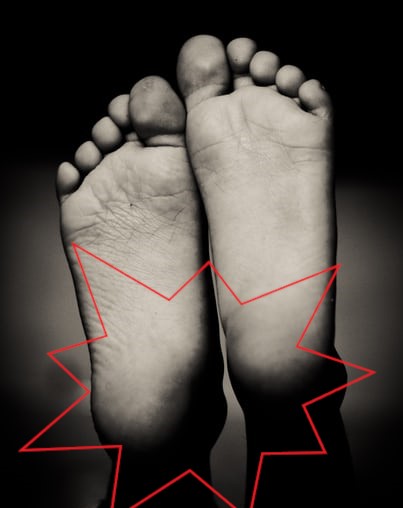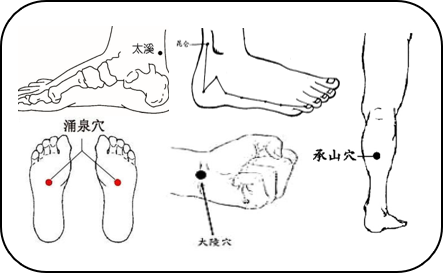Heel pain – How do we find relief?

As a saying goes, “As the person ages, the heel ages”.
Heel pain is commonly found in middle-aged and elderly groups. Around 10 percent of the population has reportedly suffered from heel pain in their life. The site of the pain is generally located at the heel region of one or both sides of the leg and is normally not swollen. Prolonged walking, standing, extending or flexing the toes can intensify the pain.
The main bulk of the body weight falls on the heel. Beneath the heel is a layer of dense subcutaneous fat known as the fat pad. Small sacs of fluid called the bursae cushion the Achilles tendon at the heel. Plantar fascia and flexor digitorum brevis are thick connective tissues that is attached to the calcaneus (heel bone).
Heel pain is caused by the pathological changes in calcaneus bone, joint, bursa, fat pad and fascia. Plantar fasciitis (Inflammation of the plantar fascia) accounts for about 80 percent of patients who suffer from heel pain. However, the absolute cause of heel pain is still unclear. The main triggers of heel pain are: excessive walking and standing, long-term and chronic bone degeneration and aseptic inflammation of soft tissue. Calcaneus bone growth or bone spur is not the direct cause of the heel pain and/or plantar fasciitis.
In Chinese Medicine, heel pain is usually caused by Liver and Kidney yin deficiency, internal phlegm, Blood heatiness and etc. Soft tissues are classified under the Liver system and bones are classified under the Kidney system. When there is a deficiency in the Liver and Kidney system, Qi and Blood cannot nourish the heel, and the lack of nutrients will result in heel pain. External “Wind”, “Coldness” and “Dampness” pathogens, trauma or chronic fatigue can also cause pain as they cause obstruction to the Qi and Blood circulation, resulting in blocked meridians and blood stasis.
Common acupressure points used for heel pain:
1. Tai Xi
2. Kun Lun
3. Yong Quan
4. Da Ling
5. Cheng Shan
Massage therapy and stretching for heel pain:
Method 1(Proximal massage):
Extend the toes and sole, massage the site of pain for 2-3 minutes. Massage Yong Quan and apply pressure to Tai Xi and Kun Lun acupressure points.
Method 2(Distal massage):
Massage and apply pressure at the base point of the palm (Da Ling acupressure point, see above) with the tip of the thumb for 1-3 minutes. If the heel pain is on the left side, massage and apply pressure on the Da Ling acupressure point on the right wrist, and vice-versa. If both sides of the heel are painful, apply pressure on the Da Ling acupressure points on both of the left and right wrists.
Method 3(Calf stretching):
Place hands flat on the wall at chest level. Bend and place one of the legs in front of the other straightened leg. Keep both feet flat on the ground. Lean forward to stretch the calf of the straightened leg for 20-30 seconds and repeatedly do this with the other leg. Breathe in deeply and rhythmically while doing the stretching.
Common Chinese Medicine herbs used for heel pain:
Herbs:
Tou Gu Cao (Caulis Impatientis)
Wei Ling Xian (Radix Clematidis)
Ru xiang (Frankincense)
Mo Yao (Myrrh)
Chuan Niu Xi (Cyathula Root)
Function:
Increase blood circulation and relieve pain
Chinese Medicine external treatment:
– Chinese Medicine plaster (with herbs) can be pasted or bandaged at the specific heel(s) with pain.
– Both heels can be soaked in warm water mixed with the right amount of vinegar for 15-30 minutes.
Function:
Anti-inflammation, increase blood circulation and removing blood stasis, strengthen bones and soft tissues, relax muscles and joints, and expel external “Wind” and “Cold” pathogens.
Prevention:
1) Choose the right and comfortable shoes with padding. Avoid wearing flat shoes.
2) Do regular leg, foot and heel exercises to increase strength and flexibility in muscles and soft tissues like ligaments.
3) Avoid over-working. Do not stand and/or walk for long duration.
4) On a daily basis, soak both heels in warm water (a small amount of vinegar could be added) to promote blood circulation and reduce the occurrence of heel pain.

Post Views: 20,386